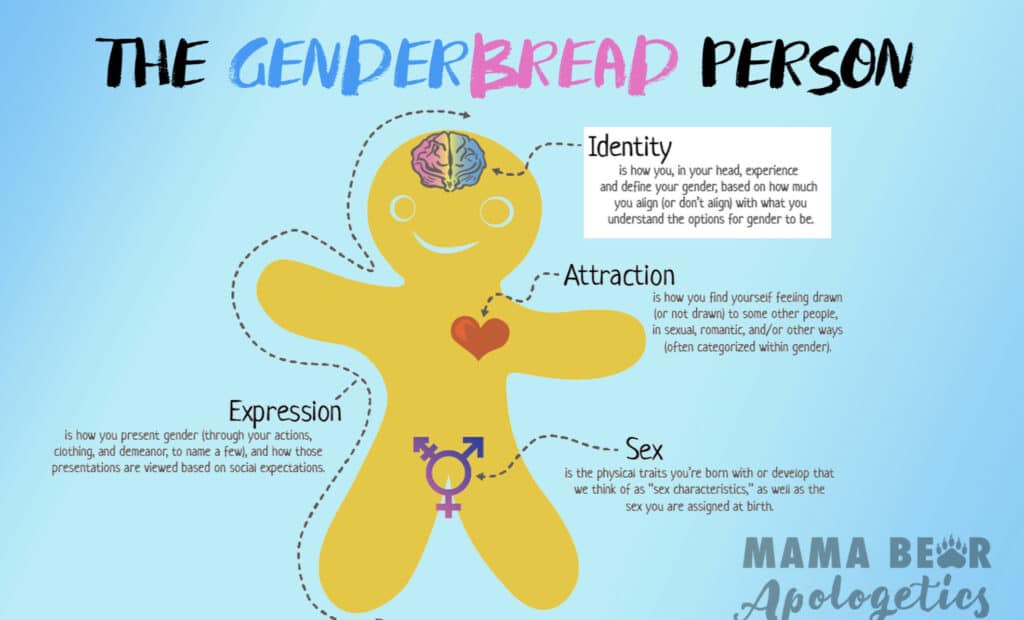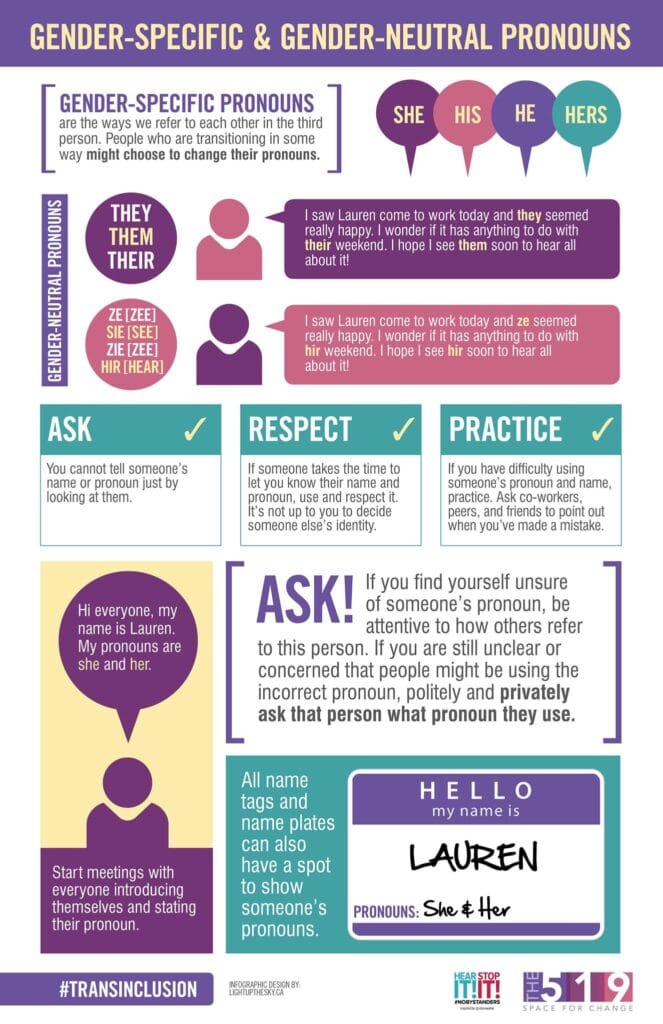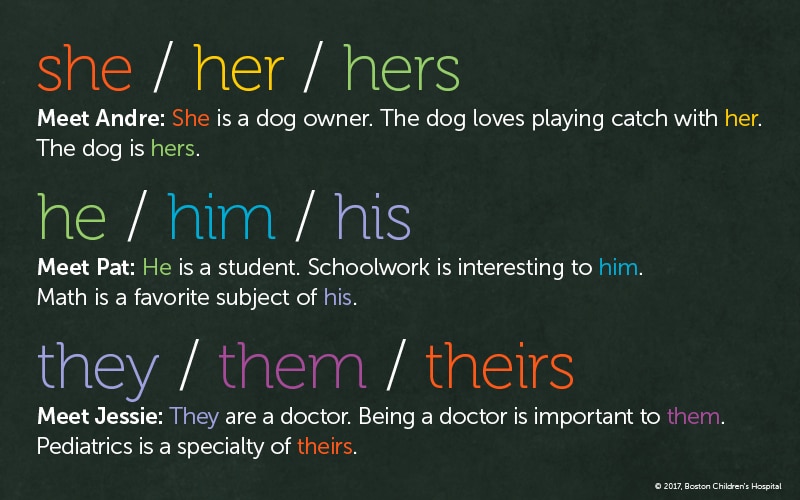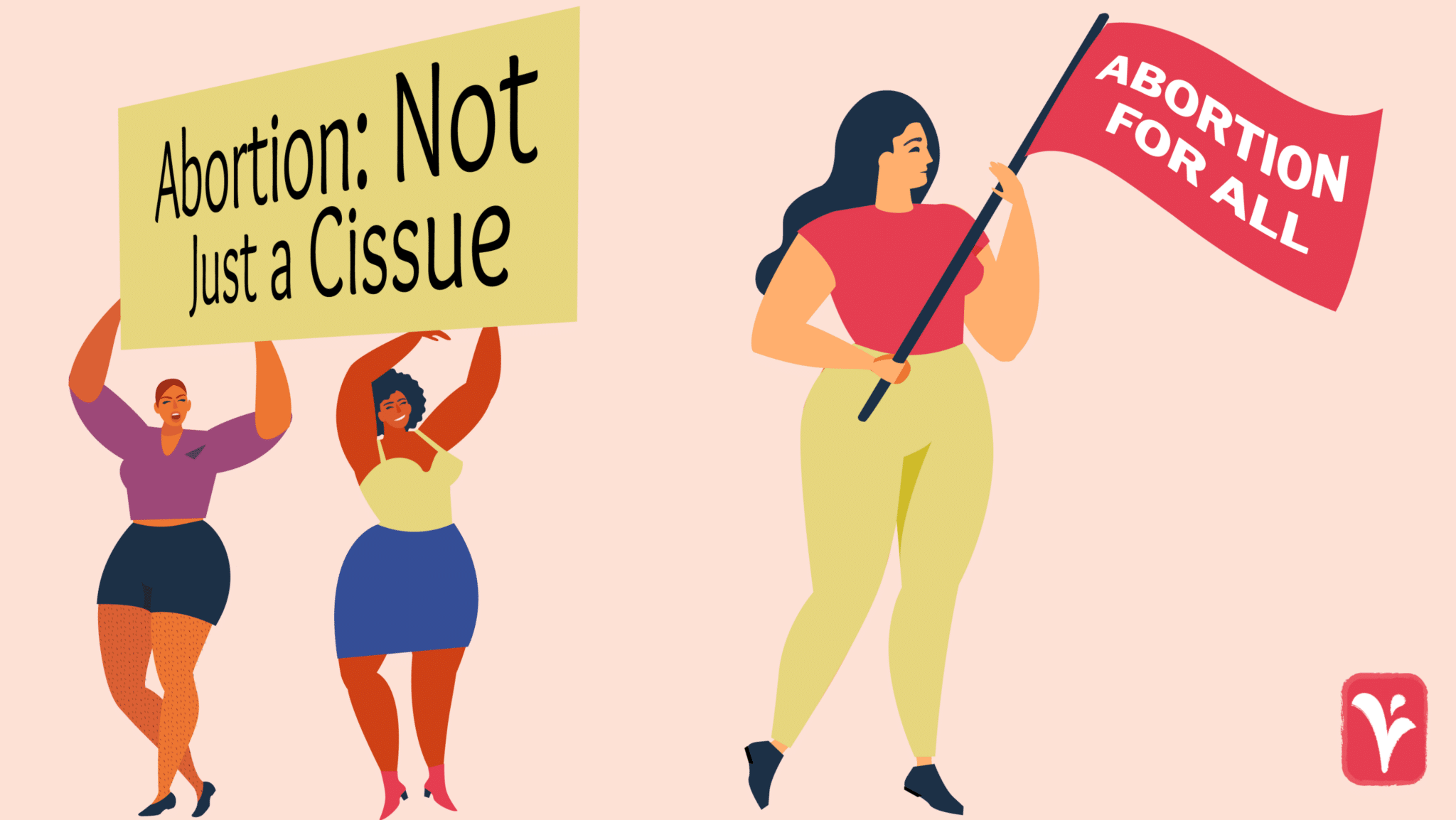Austin Women’s Health Center recognizes that abortion is not just a women’s rights issue. Women are not the only people who need access to abortion, and while our clinic name does not reflect this, we are working toward providing a more inclusive environment for all of our patients. We also recognize that using gendered language—such as “women’s rights” or “pregnant women” —contributes to the exclusion of marginalized communities who need access to abortion and who are impacted by medically unnecessary restrictions when doing so. Which is why we’ve updated our initial consultation forms to include a space for patients to indicate what pronouns to use when providing them care. We believe that gender is a social construct, and respect that not everyone’s gender identity is the same as their assigned gender at birth.
Gender Identity vs. Sex

(image from Mama Bear Apologetics)
While some people think of them as the same, there is a difference between sex and gender. The biological traits that society categorizes as “male” or “female”are known as sexes, while gender is a social identity that is more fluid, and might not align with a person’s biological sex.
Cisgender describes someone whose biological sex aligns with their gender, while transgender describes someone whose gender does not align with their biological sex. However, gender is a spectrum and also includes identities like non-binary, genderqueer, intersex, and Two-Spirit. In the same way that sex and gender have distinct differences, sexual orientation and gender identity are also different. Sexual orientation refers to our romantic and sexual attraction to others, and just a there are different identities for gender, there is also a spectrum of sexual orientations that people identify with —gay, asexual, straight, pansexual, bisexual, queer, lesbian, and more, to name a few. Women are not the only people who have abortions, and neither are straight people.
What Are Pronouns?

(image from Light Up The Sky)
Pronouns are the words you use to refer to yourself in the third person. For example, a cisgender woman who uses she/her pronouns would use “she” or “her” when describing herself to someone else. Similarly, a person who identifies as non-binary may refer to themselves as “they” or “them” when describing themselves to someone else. Some examples of pronouns include she, her, he, him, they, them, zie, and zir, and some people may just refer to themselves by their name. Respecting each person’s pronouns is respecting their personal identity, and it is not up to someone else to decide how someone identifies, regardless of their physical features or biological sex. If you’re unsure of someone’s pronouns, you can share what your pronouns are and ask them what theirs are. Practice referring to others as “they”, a gender-neutral pronoun, to avoid misgendering someone in the future. If someone corrects the pronouns you’re using to refer to them as, thank them and avoid overtly apologizing as it can put pressure on others to say “it’s okay” when it’s not.

(Image from Boston Children’s Hospital)
Why Is Gendered Language Problematic?
Gendered language is often seen in reproductive health advocacy, activism, and media — and specifically in abortion care. While abortion is commonly thought of as a women’s rights issue, as we mentioned before, abortion is not only needed by people who identify as women. Trans and gender non-conforming individuals also need access to abortion, and by centering abortion as a women’s rights issue, messaging about abortion continues to leave out the experiences of many people; people who experience additional stigma and discrimination over their decision. Nick, an abortion storyteller with We Testify Texas, spoke to VICE about their experience as a trans person accessing abortion. “I told the clinic right away that I’m trans, but I ended up crying on the phone because I was so afraid of being misgendered,” they said.
“There’s a lot of language in the pro-choice movement that calls for more inclusive framing, but we also need to focus on making abortion care gender-affirming,” Nick said. Healthcare providers have “dead-named” them (used their birth name) and while Nick doesn’t believe it’s intended maliciously, they feel providers could still make changes in order to prevent this.
“I’ve visited a doctor’s office that used forms with fields for our preferred name, legal name, and pronouns. It’s a small change that can improve the experience other trans and non-binary folks have—especially for those who experience gender dysphoria that is brought on by social interactions, like me,” they said.
Providing You With Care
Our doctors and staff want to ensure you have a comfortable experience from the very beginning, and this includes respecting your gender identity and pronouns. Our unique approach to abortion care includes considering each patient’s individual experience, and that includes working towards making our clinic more inclusive to people of all gender identities and sexualities who need to access abortion care. When filling out your initial consultation forms, you can select from the following pronouns: she/her/hers, he/him/his, they/them/their, ze/hir/hirs, ze/zir/zirs, or other. Do you have suggestions on how we can continue to make our clinic more inclusive? Let us know by contacting us.
